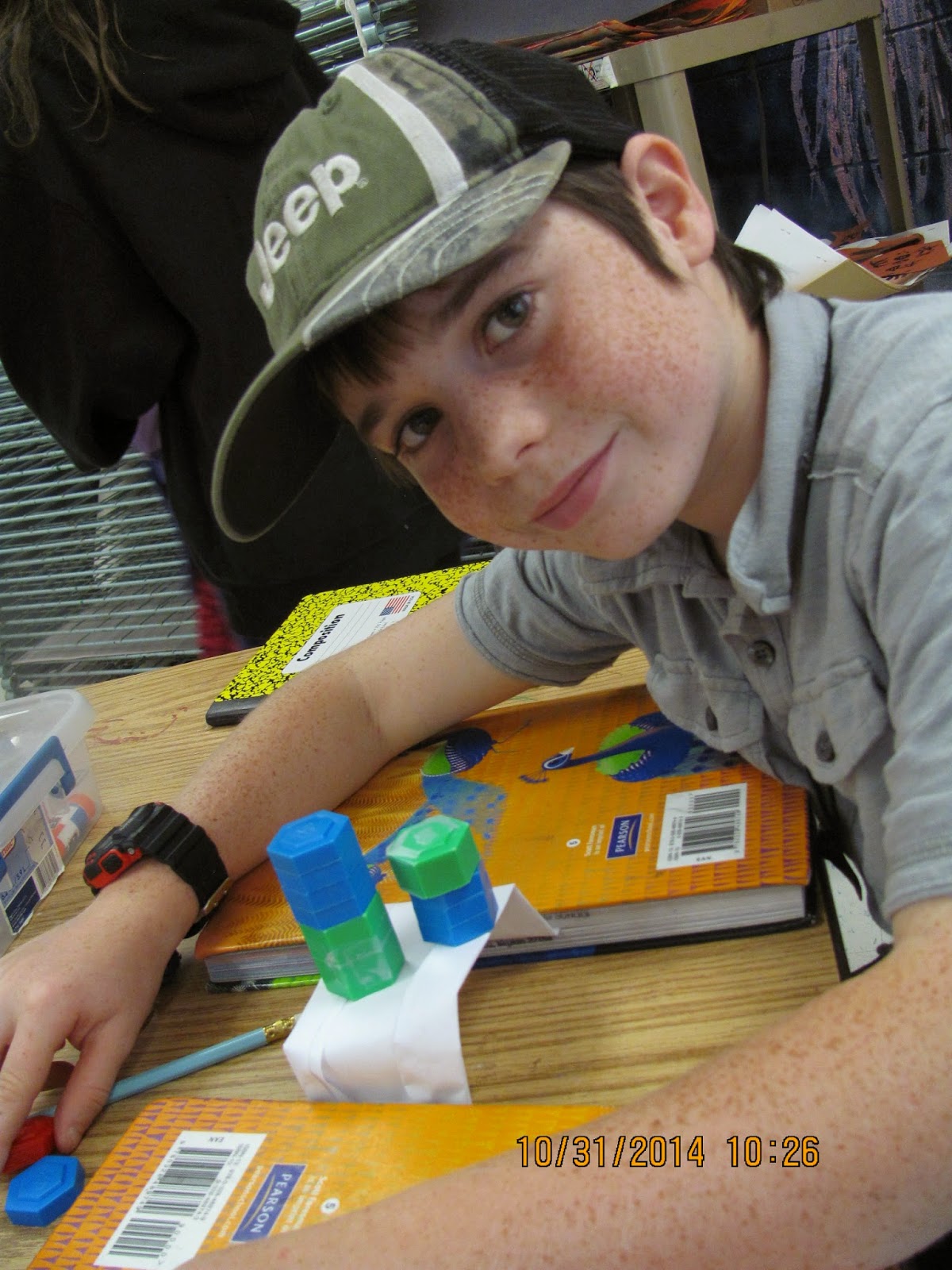STEM Extensions
Thursday, February 19, 2015
Wednesday, November 5, 2014
Investigating the Moon's Surface Grade 4
Ever wonder how the craters on the moon were formed? The fourth grade students are in the process of completing a series of investigations into this very questions.
Watch as the students in Mr. Stone's class investigate whether the size of the object that hits the moon has an affect on the size of the crater.
Ms. McCool's Class has some insightful observations about the relationship between meteor size and crater size. Perhaps these are the aerospace engineers of the future!
Watch as the students in Mr. Stone's class investigate whether the size of the object that hits the moon has an affect on the size of the crater.
Ms. McCool's Class has some insightful observations about the relationship between meteor size and crater size. Perhaps these are the aerospace engineers of the future!
Monday, November 3, 2014
Designing a Suspension Bridge Grade 5
These fifth grade students were challenged to create a suspension bridge that could support the 16 grams of weight using only a single piece of copy paper and two math books. Not a problem for our young engineers!
They were then challenged to improve their bridge so that it could hold the greatest possible weight. One team was actually able to support more than 1,000 grams using only a piece of paper and two math books. Pretty impressive!
They were then challenged to improve their bridge so that it could hold the greatest possible weight. One team was actually able to support more than 1,000 grams using only a piece of paper and two math books. Pretty impressive!
Thursday, October 30, 2014
"STEM"ific Science
The S in STEM stands for Science! So what happens when science lessons take on a STEM twist? They become "STEM"ific.
The fifth grade students have been very busy learning about energy. What better way to study sound energy than to complete a STEM challenge! Could you design a musical instrument that could produce three different tones using simple supplies. These fifth graders could!
Check out some of the explorations these students completed to learn about the various types and forms of energy.
The fifth grade students have been very busy learning about energy. What better way to study sound energy than to complete a STEM challenge! Could you design a musical instrument that could produce three different tones using simple supplies. These fifth graders could!
Check out some of the explorations these students completed to learn about the various types and forms of energy.
 |
| The force of gravity is amazing! |
 |
| What happens if we lower the ramp? |
 |
| Does the car have energy now? |
 |
| This position gives the car potential energy! |
 |
| Good thing we have safety glasses! |
 |
| Waiting for that potential energy to turn into kinetic energy. |
 |
| WOW - There is goes! |
 |
| Getting ready to tap into some chemical energy! |
"STEM"ified Math
The M in STEM stands for Math, so it's no wonder that STEM has found its way into the math classrooms at BES.
The fourth grade students found that the Engineering Design Process helped them complete the cup stacking challenge. The students were challenged to create the tallest freestanding tower that they could using 25 solo cups in one minute. Each partnership measured the height of their structure to the nearest centimeter. The class then determined the minimum and maximum values of the data set, as well as the range, median, mode, and mean. So what happens when a data collection lesson turns into a STEM lesson? Lots of excitement, problem solving, and new learning takes place. Just check out the level of student engagement present on the faces of their students as they completed their math lesson.
The fourth grade students found that the Engineering Design Process helped them complete the cup stacking challenge. The students were challenged to create the tallest freestanding tower that they could using 25 solo cups in one minute. Each partnership measured the height of their structure to the nearest centimeter. The class then determined the minimum and maximum values of the data set, as well as the range, median, mode, and mean. So what happens when a data collection lesson turns into a STEM lesson? Lots of excitement, problem solving, and new learning takes place. Just check out the level of student engagement present on the faces of their students as they completed their math lesson.
"STEM"ology!
The T in STEM stands for Technology. Technology is anything man made that was created to solve a problem. so it is no wonder that technology is such an integral part of STEM.
The students at BES are learning the basics of computer programming as they learn to write lines of code for their Bee-Bots. Take a moment to watch this video which explains why computer programming is so important in elementary school. It is worth watching!
The students at BES are learning the basics of computer programming as they learn to write lines of code for their Bee-Bots. Take a moment to watch this video which explains why computer programming is so important in elementary school. It is worth watching!
What does STEM stand for?
What in the world is STEM? The acronym stands for the four STEM subjects: Science, Technology, Engineering,
and Mathematics.
It's important to note that STEM education is not
equal
to its separate parts. Rather, it is an interdisciplinary
approach
to learning where rigorous academic concepts
are coupled with real world
problem based and
performance-based lessons. STEM education exemplifies
the
axiom, "the whole is more than the sum of the parts.”
Subscribe to:
Posts (Atom)











